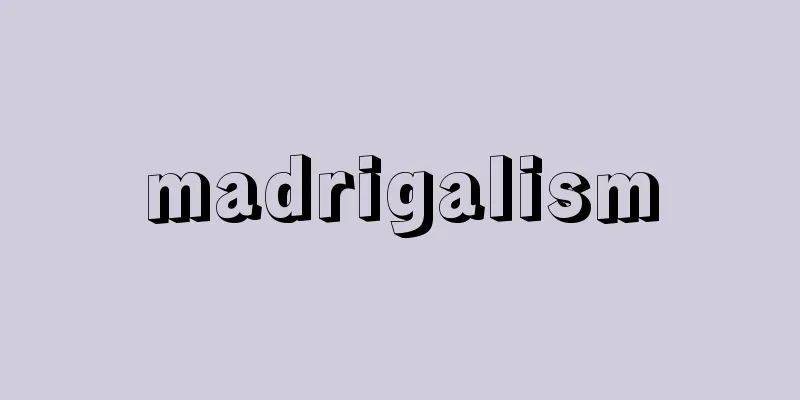Music teacher - Ongyokushisho

|
...The musical arts performed at vaudeville halls were called "Ongaku Fukiyose" and were popular during the Meiji period. After the Bunka and Bunsei eras (1804-30), many female musicians were born in Edo, and they taught not only the main arts such as Nagauta and Tokiwazu, so they were commonly called "Gomoku no Shisho" (masters of five genres). At the end of the Edo period, they also began to teach folk music and dance, and were called Ongaku Shisho (master of music), Machi Shisho (master of town), Onna Shisho (master of women), etc. [Takeuchi Michitaka]. ... *Some of the terminology explanations that refer to "music teacher" are listed below. Source | Heibonsha World Encyclopedia 2nd Edition | Information |
|
…また寄席で演奏される音楽芸を〈音曲吹き寄せ〉と称し明治時代に流行した。また文化・文政(1804‐30)以降,江戸市中に多く生まれた女性の音楽家は,長唄や常磐津などの表芸以外のものも教えたので,俗に〈五目(ごもく)の師匠〉といわれ,幕末には俗曲や舞踊も教えるようになり,音曲師匠,町師匠,女師匠などと呼ばれた。【竹内 道敬】。… ※「音曲師匠」について言及している用語解説の一部を掲載しています。 出典|株式会社平凡社世界大百科事典 第2版について | 情報 |
<<: A blast of music - Ongyoku Fukuyose
Recommend
Munich Putsch (English spelling)
A failed putsch attempted by A. Hitler in 1923. Al...
Tocotrienol
...This can lead to nephrocalcinosis, necrosis of...
Conical surface
A surface formed by lines connecting all points on...
Victoria and Albert Museum - Victoria and Albert Museum
Located in South Kensington, London, this is the w...
Britannic languages - Britannic languages
A subgroup of the Celtic branch of the Indo-Europe...
East Village
...Used bookstores, small theaters, art shops, an...
Archaeology
The word "archaeology" has been used in...
Lautensach, Hermann
[Born] 1886 [Died] 1971 German geographer. He stud...
Pteropus
...Existing species are distributed in the subtro...
dry spinning
…The process of twisting short fibers such as cot...
Bragg
British physicist. Son of WH Bragg. Initially stu...
Greek valerian
... There are more than 20 species of Polemonium ...
Zigeuner
…In English, they are called gypsies, which is a ...
Theodore Roethke
1908‐63 American poet. Born in Michigan in the Mid...
Gavotte (English: gavotte) French
The name of a dance. It is a cheerful dance in 2/...




![Kodiak [island] - Kodiak](/upload/images/67cb974c4e75a.webp)




